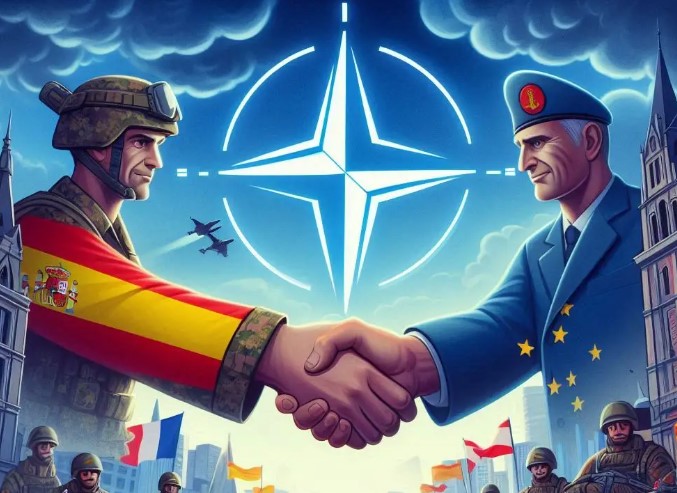The Hague/Madrid. At the recent NATO summit in The Hague, NATO Secretary General Mark Rutte made it clear that there would be no special treatment for individual allies when it comes to increasing defense spending. This also applies to Spain, which, according to Rutte, must invest significantly more in its defense than the 2.1 percent of GDP proposed by Prime Minister Pedro Sánchez. According to Rutte, Spain must reach 3.5 percent by 2029 to meet the new goals of the alliance, which have been accepted by “all allies.”
No Way Around 5 Percent: The New NATO Goal
NATO Secretary General Mark Rutte had already emphasized beforehand that all member states should reach the 2 percent of economic output agreed upon in Wales in 2014 by 2025. However, a “new goal is now required” as the world has “become more dangerous.” The new NATO roadmap stipulates that all allies should invest 5 percent of their GDP in defense by 2035. Rutte affirmed that this ambitious goal has been accepted by all countries and there is “no option” to exclude anyone. “NATO does not understand parallel pacts,” said Rutte, implicitly questioning the Spanish position, which refers to 2.1 percent by 2029.
Spain’s Contribution in Focus: A Matter of Interpretation
Pedro Sánchez had announced on Sunday before the summit that Spain would invest 2.1 percent in defense plans or capability targets. This figure is to be reviewed in 2029. Rutte countered that this sum is far from sufficient to reach an agreement with the alliance that would exempt Spain from the 5 percent target. Whether 5 percent is merely a long-term goal or already decisive in 2029 will become clear when the national plans are reviewed. “Much more needs to be done now to face the dangers that lie ahead,” warned the former Dutch Prime Minister.
More Investment, More Production: The Future of NATO
Rutte defended the new plan, which has the full approval of the United States, as “ambitious, historical, and fundamental to securing our future.” While the details of the national plans are secret, Rutte mentioned some concrete goals: more air capacity, thousands of new tanks to protect ground troops, and millions of ammunition. He emphasized the need to “invest more, produce more, and do so hand in hand with industry.”
Adapting to the new goal poses greater challenges for some allies than for others. While countries like the US, Poland, or Estonia are already close, others, like Spain, “still have a long way to go,” according to Rutte. He reiterated once again that “all allies have accepted the goal, and all allies have agreed on capability targets.”
Shared Responsibility and the Threat from Russia
The NATO Secretary General stressed that NATO cannot overcome these challenges alone. Close cooperation with Ukraine, the EU, and Indo-Pacific allies is essential to ensure “equality in the distribution of responsibilities.” Russia was again named as the main threat to NATO, “with the support of China, North Korea, or Iran.” Support for Ukraine will therefore be maintained, with the alliance having provided 35,000 million in aid in the first half of the year alone.




